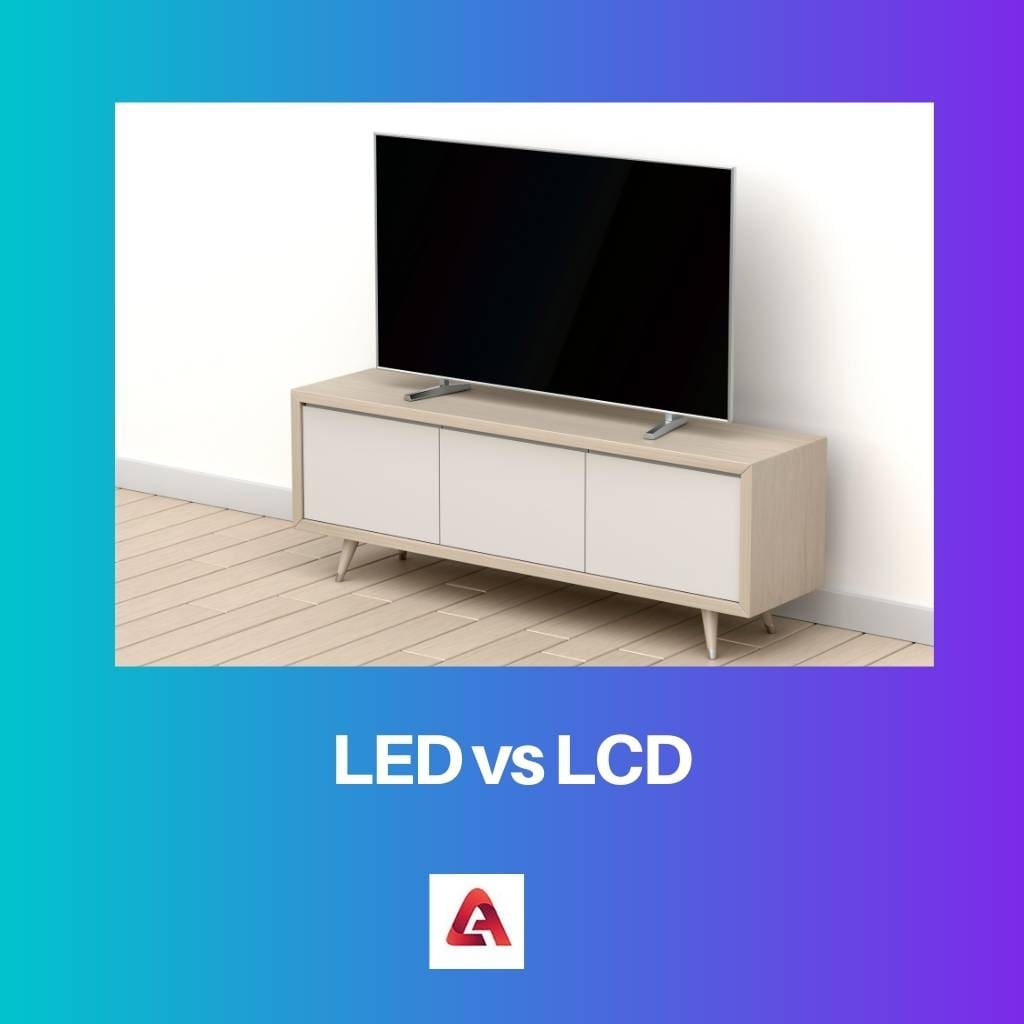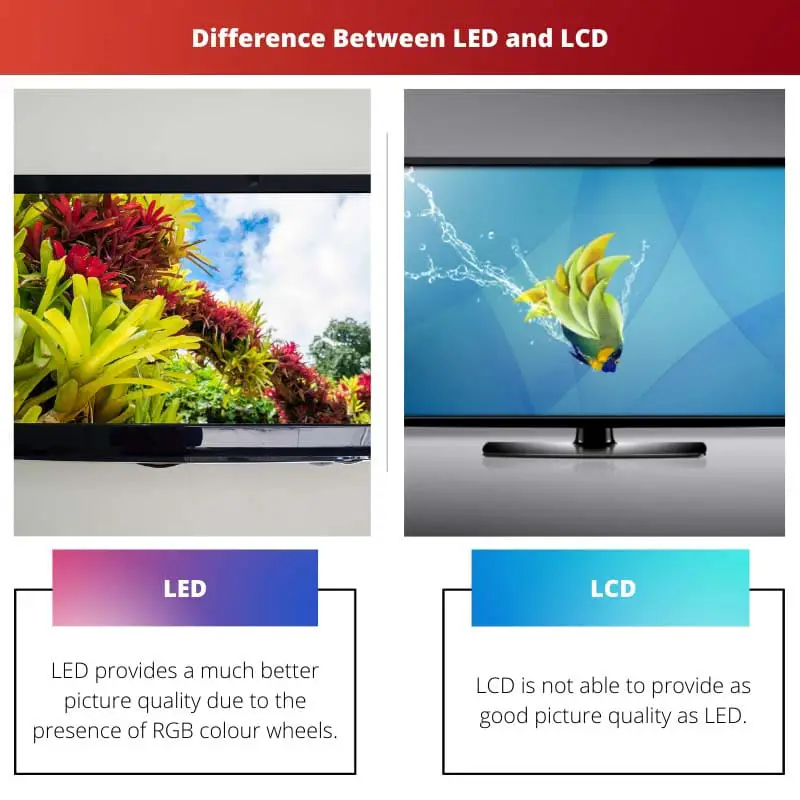We are living in an era of advanced technology where people are making use of technology in the best possible way to excel in every domain of life.
Key Takeaways
- LED displays use light-emitting diodes for backlighting, and LCDs use liquid crystals and fluorescent lamps.
- LED displays consume less power, offer better color accuracy, and have higher contrast ratios.
- LED technology is newer and more expensive than LCD.
LED vs LCD
LED displays produce images using light-emitting diodes, which are small semiconductor devices emitting light when an electric current passes through them. LCD displays use technology with liquid crystals to produce images. They are known for their sharp image quality and color accuracy.

LED can be categorized as a subset of LCD, which is in great demand nowadays for the manufacturing of electronic devices as it has a very long life, provides the best picture quality, and also has a high-definition output.
LCD, which was in great use a few years back, has become outdated due to the invention of LED. LCD is basically a submissive device that uses fluorescent tubes to lighten the image.
Comparison Table
| Parameters of Comparison | LED | LCD |
|---|---|---|
| Picture Quality | LED provides a much better picture quality due to the presence of RGB colour wheels. | LCD is not able to provide as good picture quality as LED. |
| Price | LED’s are costlier than LCDs. | LCD’s are cheap in comparison. |
| Lifespan | The average lifespan of LED is close to 1,00,000 hours. | The average lifespan of LCD is close to 75000 hours. |
| Power Efficiency | LED’s are highly power effective and consume comparatively less power. | LCDs are less power efficient and utilize more power. |
| Environment Friendly | LED does not pose any harm to the environment as no mercury is used for the production of LED. | LCD is a great threat to nature as mercury is used in its manufacturing. |
What is LED?
Light Emitting Diode (LED) is an indication of how technology has reached new heights in the modern world. It has displaced the fluorescent tubing with backlight technology which helps it deliver a precise and clear image.
LED is basically used in the manufacturing of computer monitors, Bulbs, and Televisions. LED televisions are in great demand now due to the extraordinary features and benefits which they provide.
It works on the principle of Electroluminescence. Light in a LED is produced when particles carrying current, also known as electrons and holes, come collectively within the material of the semiconductor.
Gamers use LED screens for playing high graphic games as LED screens have a much better contrast in comparison to LCD screens.

What is LCD?
Liquid Crystal Display (LCD) is made of a material called Liquid Crystal which is a type of substance that is neither liquid nor solid but comes somewhere in the middle of these two.
There are, in general, three types of LCD TVs that are Flat screen LCDs, Front Projection LCDs, and Rear projection LCDs.
There are numerous disadvantages of LCD like it has an unusual refresh frequency and it also suffers from action blur consequences.
The major elements that are necessary for displaying an image on the LCD screen are Light, color and the method to regulate the light and colors on the screen.

Main Differences Between LED and LCD
- LEDs work on the well-known principle of Electroluminescence, whereas all LCDs function on the basic principle of blocking light energy.
- If we discuss the relevance of LED and LCD in the modern era, then LED are much more relevant and in use than LCD.




